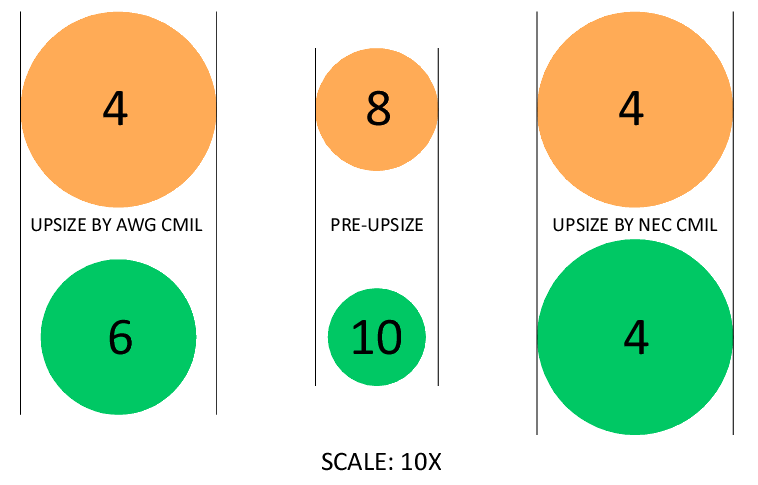sandsnow said:
I don't get it. The Code calls out proportional to cmil area, so why are we talking about AWG and diameter? Why don't we just use the values in the table and forget about it?
The math to figure it is not hard, just time consuming if you have a lot of feeders to check.
I believe it goes to intent... it has to! For the requirement certainly is not specific enough to eliminate different approaches.
Observe the following depiction of conductor cmil areas, using the problem I posed earlier.
The requirement:
NEC 250.122 said:
(B) Increased in Size. Where ungrounded conductors are increased in size, equipment grounding conductors, where installed, shall be increased in size proportionately according to the circular mil area of the ungrounded conductors.
Where in there does it say
proportionately must be mathematically decided?
Additionally, some assume the result of mathematical proportionating is the minimum cmil area of the upsized EGC (depicted in image above). Where in the requirement does it say that?
What if I decide to upsize EGC by visual proportions? Would that violate the code? Technically, no... for the requirement is not that specific.
I can just as easily do the proportioning calulation and choose whichever size conductor is closest by cmil area. Would that violate the code? Technically, no... for the requirement is not that specific.
I demonstrated above that using more accurate cmil area values than published in NEC tables that the calculation can result in a larger difference than performing the same calculation with NEC table values. Yet the result points a two different sizes for the upsized EGC (assuming the result iis indicative of the minimum cmil area).
I'm willing to wager a grand that the 2 and 8 cmil area differences noted earlier are well within manufacturing tolerances of a 6 AWG conductor!!!
Let's take a poll:
Looking at the image above, which do you believe best represents the intent of 250.122(B), the pair on the left or right?


